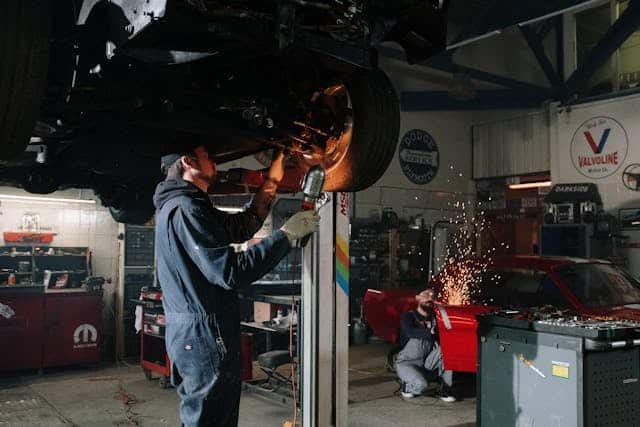The Importance of Regular Underbody Inspections Post-Repair
 After a vehicle has undergone repair, especially if it involved significant structural damage, conducting regular underbody inspections is crucial for maintaining its safety and performance. The underbody of a car is often overlooked, yet it is exposed to a multitude of stressors and potential damage sources, such as road debris, corrosion, and residual issues from accidents. Regular underbody inspections can identify hidden problems before they lead to more significant and costly issues. This article explores the reasons why underbody inspections are essential post-repair and the benefits they provide to vehicle owners.
After a vehicle has undergone repair, especially if it involved significant structural damage, conducting regular underbody inspections is crucial for maintaining its safety and performance. The underbody of a car is often overlooked, yet it is exposed to a multitude of stressors and potential damage sources, such as road debris, corrosion, and residual issues from accidents. Regular underbody inspections can identify hidden problems before they lead to more significant and costly issues. This article explores the reasons why underbody inspections are essential post-repair and the benefits they provide to vehicle owners.
Detecting Hidden Damages
Assessing Unseen Impacts
During a collision, even if the damage appears minor or is expertly repaired, there can be hidden consequences that aren’t immediately noticeable. An underbody inspection helps ensure that all aspects of a vehicle’s structure and systems are functioning correctly and haven’t been compromised. For example, frame alignments and the condition of the suspension system can be verified to prevent future problems.
Preventing Long-Term Issues
Regular inspections help catch issues like cracks, rust, and structural weaknesses that can worsen over time if left unaddressed. Identifying these issues early can save money and extend the vehicle’s lifespan by preventing more extensive damage that can result from neglect.
Protecting Against Environmental Damage
Road Salt and Corrosion
In regions where roads are treated with salt during winter, underbody components are particularly susceptible to rust and corrosion. Regular inspections can catch early signs of corrosion, allowing for timely preventative treatments or repairs, which protect the vehicle’s integrity and functionality.
Sealing and Protective Coatings
The inspection process can also verify the condition of protective coatings and seals that safeguard the underbody from moisture, dirt, and debris. If these protective layers are compromised, applying new coatings during an inspection can prevent significant deterioration.
Enhancing Vehicle Safety and Performance
Ensuring Structural Integrity
The underbody includes critical components that contribute to a vehicle’s overall safety, such as the steering and braking systems. Regular inspections ensure these vital parts remain in optimal condition, directly impacting the safety and handling of the vehicle.
Maintaining Alignment and Suspension
Accurate alignment and a well-functioning suspension system are crucial for safe driving. Regular underbody checks post-repair help ensure that any alignments done during repairs hold over time and that suspension components are not suffering from undue wear or damage.
Recommended Practices for Underbody Inspections
Frequency of Inspections
The recommended frequency of underbody inspections can vary based on several factors including the age of the vehicle, typical driving conditions, and the nature of past repairs. As a general rule, a thorough underbody inspection should be conducted at least once a year. However, in harsh climates or if the vehicle is frequently driven on rough terrain, more frequent inspections are advisable.
Professional Assessments
While some visible underbody issues can be spotted by vehicle owners, professional inspections by qualified technicians are recommended. They can utilize lifts and specialized tools to gain a comprehensive view of hard-to-reach areas and perform detailed assessments.
Conclusion
Regular underbody inspections are a critical part of post-repair maintenance that can significantly impact the longevity, performance, and safety of a vehicle. They help vehicle owners catch potential problems early, maintain the vehicle’s structural integrity, and ensure that driving safety is not compromised. Investing in regular underbody checks is a proactive strategy that pays off by preventing larger issues and ensuring peace of mind on the road.
